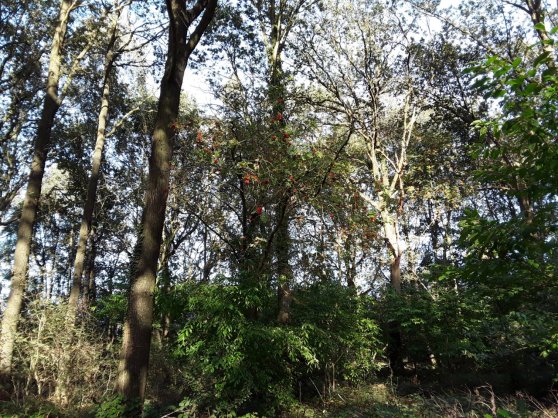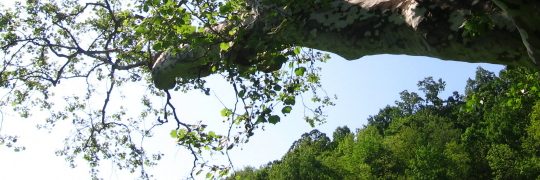The Hunebedden, Day 4 afternoon
Robert and I like the small towns and countryside as much as (or more than) cities, and are interested in history, prehistory, geology, and nature wherever we go. I had noticed De Weerribben-Wieden National Park, a large fen – formed by centuries of peat- and reed-cutting – north of Meppel. When Judy told us about the Hunebedden, we were ready to go. Saturday afternoon, after picking up the picnic ingredients, we drove west, along the south side of the fens, and then north past the lakes. We missed a turn, didn’t find a convenient place to walk in the fens, and went on to find the hunebedden, specifically D53 and D54, which are a pair, and two of three that are apart from the long line of them along the eastern border of Drenthe. A wonderful site and map here, no English version.
So, what are hunnebedden? In the UK, they are called barrows – burial mounds, in this case stone tunnels covered by earth, but now only the stones remain. These are from around 4500 BCE, and built by Beaker people, who belonged to a culture which spread from Spain all over Europe, without a migration, and then Beaker people from, probably, the area of the Netherlands migrated to Great Britain, replacing the farmers who had moved in from the steppes, who had replaced the hunter-gatherers who had built Stonehenge.
While we try not to do a lot of research or have expectations when we travel, at the same time, seeing through a lens of reconstructing/imagining what was rather than just what is. And afterwards, researching what we didn’t understand or what we want to know. Here is a site on the geography and geology of the Netherlands. Almost all of the Netherlands is the flat delta of the Rhine, and the major divisions of the soil types are sea clay and river clay, sea sand and river sand. The few hills and stones are sand dunes and boulders pushed ahead of the glaciers in the ice ages, including the boulders used for the hunebedden, and the low ridge near the two we visited.
Deltawerken.Com / Delta Works .Org
We looked at the first hunebed and took a walk through the woods on the dune above it, which was full of bomb craters from World War II, now filled with water and home to salamanders. The Germans built an airfield here during the occupation, dismantling D53, which the Dutch reconstructed from photographs and field notes after the war.

Woods on the Havelterberg

“Een bulldozer van ijs”

Huunebedden in the distance
We walked back up to the parking, where there were picnic tables, had our picnic supper, and drove back through the country to Meppel.

